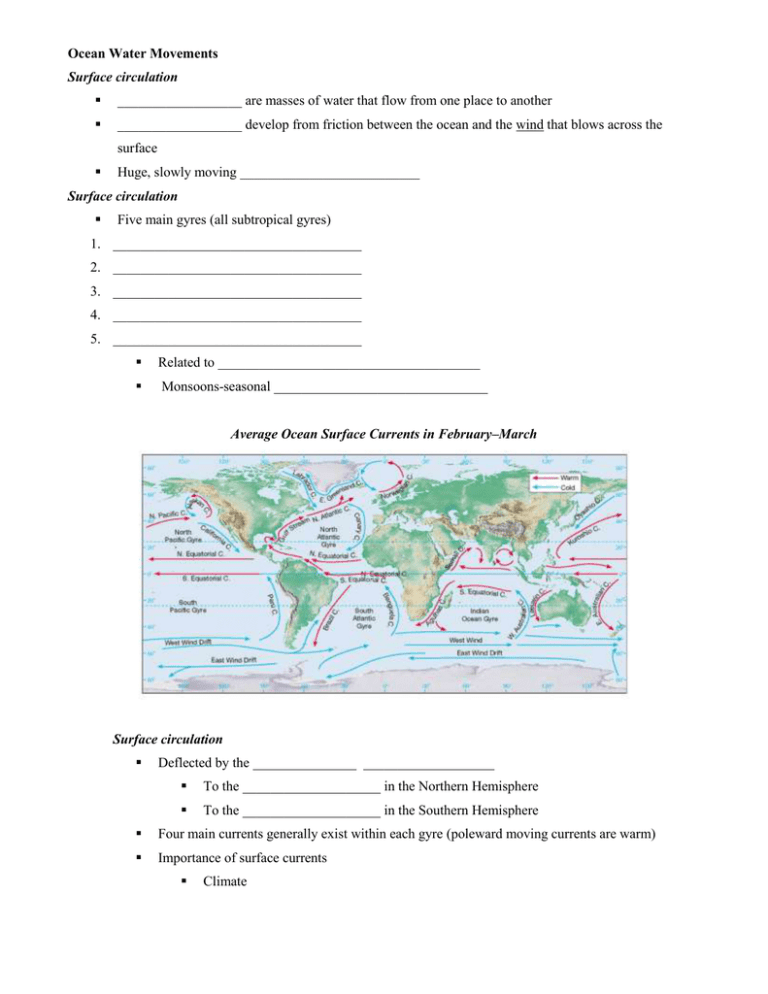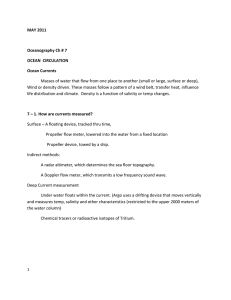File
advertisement

Ocean Water Movements Surface circulation __________________ are masses of water that flow from one place to another __________________ develop from friction between the ocean and the wind that blows across the surface Huge, slowly moving __________________________ Surface circulation Five main gyres (all subtropical gyres) 1. ____________________________________ 2. ____________________________________ 3. ____________________________________ 4. ____________________________________ 5. ____________________________________ Related to ______________________________________ Monsoons-seasonal _______________________________ Average Ocean Surface Currents in February–March Surface circulation Deflected by the _______________ ___________________ To the ____________________ in the Northern Hemisphere To the ____________________ in the Southern Hemisphere Four main currents generally exist within each gyre (poleward moving currents are warm) Importance of surface currents Climate Currents from low latitudes into higher latitudes (warm currents) transfer heat from ______________ to _________________ areas, most noticed in the middle latitudes during winter. Surface circulation Importance of surface currents Climate Influence of _________currents is most pronounced in the tropics or during the summer months in the middle latitudes Maintains _____________ __________ __________________ Upwelling The ____________ of cold water from deeper layers Most common along west coast of continents (coastal upwelling) ____________ rich water from below is added to surface ____________ Deep-ocean circulation A response to ____________________ differences Factors creating a dense mass of water __________________ —Cold water is dense (sea ice causes unfrozen water to be saltier) _______________ —Density increases with increasing salinity Called ___________________ _____________________ Deep-ocean circulation Most water involved in deep-ocean currents begins in ______________ latitudes at the surface A simplified model of ocean circulation is similar to a __________________ _____________ that travels from the Atlantic Ocean, through the Indian and Pacific Oceans, and back again. Idealized “Conveyor Belt” Model of Ocean Circulation








